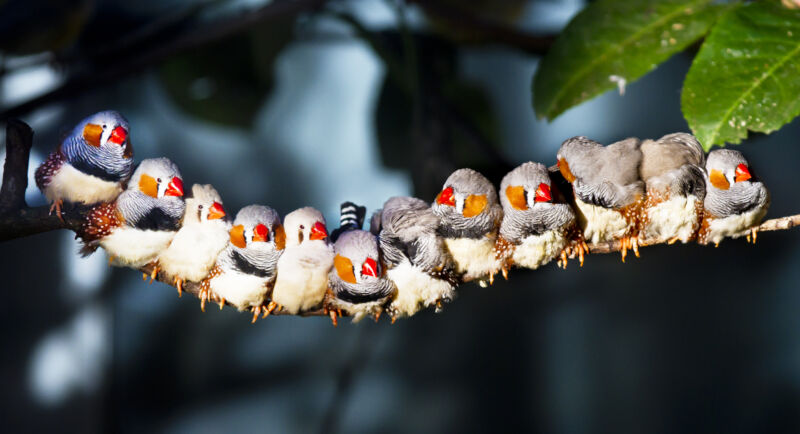Do birds have language? It depends on how you define it

Enlarge / Zebra finches sitting together on a tree branch and sunning. (credit: sagarmanis | Getty Images)
In our quest to find what makes humans unique, we often compare ourselves with our closest relatives: the great apes. But when it comes to understanding the quintessential human capacity for language, scientists are finding that the most tantalizing clues lie farther afield.
Human language is made possible by an impressive aptitude for vocal learning. Infants hear sounds and words, form memories of them, and later try to produce those sounds, improving as they grow up. Most animals cannot learn to imitate sounds at all. Though nonhuman primates can learn how to use innate vocalizations in new ways, they don't show a similar ability to learn new calls. Interestingly, a small number of more distant mammal species, including dolphins and bats, do have this capacity. But among the scattering of nonhuman vocal learners across the branches of the bush of life, the most impressive are birds-hands (wings?) down.
Parrots, songbirds, and hummingbirds all learn new vocalizations. The calls and songs of some species in these groups appear to have even more in common with human language, such as conveying information intentionally and using simple forms of some of the elements of human language such as phonology, semantics, and syntax. And the similarities run deeper, including analogous brain structures that are not shared by species without vocal learning.
Read 40 remaining paragraphs | Comments